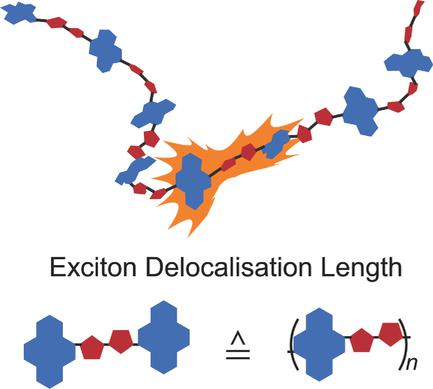当前位置:
X-MOL 学术
›
Adv. Electron. Mater.
›
论文详情
Our official English website, www.x-mol.net, welcomes your feedback! (Note: you will need to create a separate account there.)
Electronic Structure Trumps Planarity: Unexpected Narrow Exciton Delocalization in PNDIT2 Revealed by Time‐Resolved Electron Paramagnetic Resonance (EPR) Spectroscopy
Advanced Electronic Materials ( IF 6.2 ) Pub Date : 2018-01-25 , DOI: 10.1002/aelm.201700385 Deborah L. Meyer 1 , Rukiya Matsidik 2 , Michael Sommer 2 , Till Biskup 1
Advanced Electronic Materials ( IF 6.2 ) Pub Date : 2018-01-25 , DOI: 10.1002/aelm.201700385 Deborah L. Meyer 1 , Rukiya Matsidik 2 , Michael Sommer 2 , Till Biskup 1
Affiliation

|
Exciton delocalization in organic semiconductors, due to its direct relation to device efficiency, is of outstanding importance. Time‐resolved electron paramagnetic resonance spectroscopy of light‐induced triplet excitons gives access to the delocalization length in a unique way, connecting it to both, electronic structure and overall conformational flexibility. Systematically investigating building blocks of increasing length and comparing the results with the polymer deepens the understanding of the structure–function relationship in organic semiconductors. Applying this approach to the n‐type polymer poly{[N,N′‐bis(2‐octyldodecyl)‐naphthalene‐1,4,5,8‐bis(dicarboximide)‐2,6‐diyl]‐alt‐5,5′‐(2,2′‐bithiophene)} (PNDIT2) known for its remarkable charge‐carrier mobility reveals the triplet exciton in this polymer to be strongly confined to no more than two repeat units. Furthermore, neither planarity nor extent of backbone conjugation seem to be good indicators for the exciton delocalization length.
中文翻译:

电子结构改善了平面性:时间分辨电子顺磁共振(EPR)光谱揭示了PNDIT2中的意外窄激子离域
由于有机半导体中的激子离域,由于其与器件效率直接相关,因此非常重要。光诱导三重态激子的时间分辨电子顺磁共振波谱以独特的方式获得离域长度,将其与电子结构和整体构象灵活性相连接。系统地研究增加长度的结构单元,并将结果与聚合物进行比较,加深了对有机半导体结构与功能关系的理解。将这种方法应用于n型聚合物聚{[ N,N'-双(2-辛基十二烷基)-萘-1,4,5,8-双(二甲酰亚胺)-2,6-二基] alt-5,5'-(2,2'-联噻吩)}(PNDIT2)以其显着的电荷-载流子迁移性而闻名,它揭示了该聚合物中的三重态激子被严格限制为不超过两个重复单元。此外,平面度和主链共轭程度似乎都不是激子离域长度的良好指标。
更新日期:2018-01-25
中文翻译:

电子结构改善了平面性:时间分辨电子顺磁共振(EPR)光谱揭示了PNDIT2中的意外窄激子离域
由于有机半导体中的激子离域,由于其与器件效率直接相关,因此非常重要。光诱导三重态激子的时间分辨电子顺磁共振波谱以独特的方式获得离域长度,将其与电子结构和整体构象灵活性相连接。系统地研究增加长度的结构单元,并将结果与聚合物进行比较,加深了对有机半导体结构与功能关系的理解。将这种方法应用于n型聚合物聚{[ N,N'-双(2-辛基十二烷基)-萘-1,4,5,8-双(二甲酰亚胺)-2,6-二基] alt-5,5'-(2,2'-联噻吩)}(PNDIT2)以其显着的电荷-载流子迁移性而闻名,它揭示了该聚合物中的三重态激子被严格限制为不超过两个重复单元。此外,平面度和主链共轭程度似乎都不是激子离域长度的良好指标。



























 京公网安备 11010802027423号
京公网安备 11010802027423号